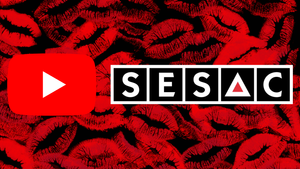YouTube and SESAC, a major performance rights organization, have reached a new licensing agreement after a dispute that temporarily blocked music from several top artists on the platform. SESAC represents over 15,000 songwriters and composers, including well-known musicians like Adele, Green Day, and Bob Dylan. The conflict centered around the expiration of their previous contract, which caused YouTube to remove music content ahead of the official end date. This situation has drawn attention due to the scope of artists affected and the ongoing battle over fair compensation for music rights in the digital age.
What’s Happening & Why This Matters
In late September, YouTube began pulling music from artists represented by SESAC in the U.S., sparking concern and confusion. The platform, owned by Google, stated that the removal occurred due to the expiration of their licensing agreement, which was set to end on October 1, 2024. Even before the official deadline, YouTube “unilaterally” removed several songs, according to SESAC President Scott Jungmichel. This action impacted popular songs by artists such as Adele, Kendrick Lamar, Britney Spears, and Bob Dylan, among others.
The primary issue was the inability of YouTube and SESAC to come to a new agreement before the contract expired. Despite both parties engaging in negotiations, no deal was finalized in time, leading YouTube to remove the music content as a precautionary step to avoid copyright violations.
SESAC represents songwriters and publishers, managing their royalties and protecting their works. Without a deal, YouTube faced the risk of using music content without the proper rights, a legal issue that it wanted to avoid. Meanwhile, SESAC, protecting the interests of its artists, demanded fair compensation for their music being used on the platform.
As negotiations continued, YouTube announced through a post on X (formerly Twitter) that a new agreement had been reached, and the affected content would be restored in the coming days. SESAC expressed relief over the resolution, stating that the deal would fairly compensate songwriters and publishers going forward.
This situation mirrors other recent high-profile disputes in the music industry. Earlier this year, Universal Music Group and TikTok experienced a similar clash, which led to songs being temporarily unavailable on the platform. These public contract disputes are part of a growing trend as music streaming platforms and performance rights organizations navigate the evolving digital landscape and seek fair terms for using artists’ work.
TF Summary: What’s Next?
The SESAC-YouTube conflict underscores the growing tension between content platforms and rights holders. While YouTube’s quick resolution avoided long-term disruption for listeners, the music industry’s ongoing fight for fair compensation remains a central issue. TF projects that media platforms will endure frequent clashes over licensing — especially as more artists demand greater transparency and revenue from streaming services. For the moment, the deal ensures SESAC-represented artists’ music remains accessible on the platform. However, it presents the need for continuous dialogue and adaptation as the music industry stays relevant in digital experiences.


